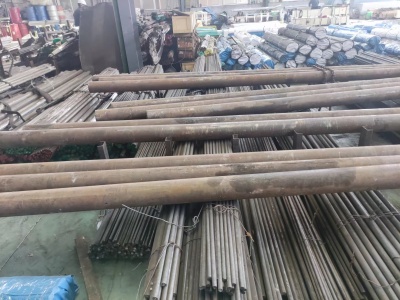Description
Scope of supply of Aviation Group:
Non-standard forgings, round rods, steel plates, rings, seamless pipes
- Introduction to SUS630 Materials
SUS630 alloy is precipitated, hardened, martensite stainless steel composed of copper, niobium/cinnabar. Corresponding grade: 0Cr17Ni4Cu4Nb 05Cr17Ni4Cu4Nb S17400
SUS630 is a martensite precipitated hardened stainless steel with high strength, high hardness, good welding performance and corrosion resistance. It has been widely promoted and used in valves, shafts, chemical fibers, aerospace and other industries, and has high-strength components with certain corrosion resistance requirements.
- SUS630 Chemical Composition
| alloy | % | C | Mn | And | P | S | Cr | In | Cu | Fe | Nb |
| SUS630 | Minimum value | – | – | – | – | – | 15.5 | 3.0 | 3.0 | margin | 0.15 |
| Maximum value | 0.07 | 1.0 | 1.0 | 0.040 | 0.030 | 17.5 | 5.0 | 5.0 | 0.45 |
- SUS630 Physical Performance
| density | 7.78g/cm3 |
| Melting point | 1400-1440℃ |
Mechanical properties of SUS630 alloy at room temperature:
| alloy | Tensile strength Rm N/mm2 |
Yield strength RP0.2N/mm2 |
Elongation A5 % |
Brinell hardness HB |
| 480℃ aging | ≥1310 | ≥1180 | ≥10 | ≥40 |
| 550℃ aging | ≥1060 | ≥1000 | ≥12 | ≥35 |
| 580℃ aging | ≥1000 | ≥865 | ≥13 | ≥31 |
| Aging effect of 620℃ | ≥930 | ≥325 | ≥16 | ≥28 |
- SUS630 corrosion resistance
- SUS630 alloy has corrosion resistance better than any other standard hardenable stainless steel plate. In most cases, its corrosion resistance is no less than 304.
- If there is a risk of stress corrosion cracking, the higher aging temperature must be above 550°C (1022°F), preferably 590°C (1094°F).
- The tempering temperature in the chloride medium is 550°C-1022°F.
- The tempering temperature in H2S medium is 590°C-1094°F.
- It is susceptible to corrosion or crack corrosion in static seawater.
- Its corrosion resistance is the same as the 304L grade in petrochemical, food processing and paper industry.
- SUS630 delivery status
Generally, delivery is carried in a heat treatment state, and the type of heat treatment is indicated in the contract; if not specified, delivery is carried in a heat treatment state.
SUS630 alloy is a precipitated, quenched, martensite stainless steel, and this grade has high strength, hardness and corrosion resistance. After heat treatment, the mechanical properties of the product are more perfect, reaching a compressive strength of up to 1100-1300 mpa (160-190 ksi). This grade cannot be used at temperatures above 300°C (570F) or very low. It has good corrosion resistance to the atmosphere and diluted acids or salts, and its corrosion resistance is the same as 304 and 430.
SUS630 Mechanical Properties
Tensile strength σb (MPa): 480℃ aging, ≥1310; 550℃ aging, ≥1060; 580℃ aging, ≥1000; 620℃ aging, ≥930
Conditional yield strength σ0.2 (MPa): 480℃ aging, ≥1180; 550℃ aging, ≥1000; 580℃ aging, ≥865; 620℃ aging, ≥725
Elongation δ5 (%): 480℃ aging, ≥10; 550℃ aging, ≥12; 580℃ aging, ≥13; 620℃ aging, ≥16
Section shrinkage rate ψ (%): 480℃ aging, ≥40; 550℃ aging, ≥45; 580℃ aging, ≥45; 620℃ aging, ≥50
Hardness: solid solution, ≤363HB and ≤38HRC; aging of 480℃, ≥375HB and ≥40HRC; aging of 550℃, ≥331HB and ≥35HRC; aging of 580℃, ≥302HB and ≥31HRC; aging of 620℃, ≥277HB and ≥28HRC
SUS630 heat treatment process, heat treatment specifications:
1) Solid solution at 1020~1060℃ quickly cooled;
2) Aging at 480℃, after solid solution treatment, air-cooling at 470~490℃;
3) Aging at 550℃, after solid solution treatment, air-cooling at 540~560℃;
4) Aging at 580℃, after solid solution treatment, air-cooling at 570~590℃;
5) Aging at 620℃, after solid solution treatment, air-cooling at 610~630℃. Metallographic structure: The tissue is characterized by precipitation and hardening.
Delivery status
Generally, delivery is carried in a heat treatment state, and the type of heat treatment is indicated in the contract; if not specified, delivery is carried in a heat treatment state.
- SUS630 application fields
- Maritime platform, helicopter deck, other platforms
- Food Industry
- Pulp and paper industry
- Aerospace (turbine blades)
- Mechanical components
- Nuclear Waste Bucket

